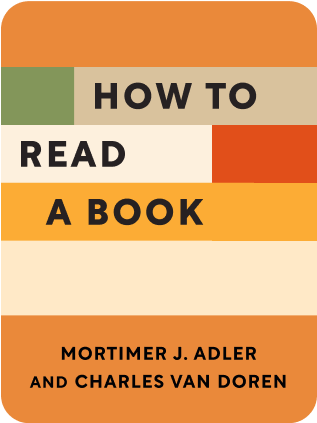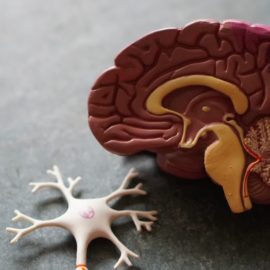

This article is an excerpt from the Shortform book guide to "How to Read a Book" by Mortimer J. Adler and Charles van Doren. Shortform has the world's best summaries and analyses of books you should be reading.
Like this article? Sign up for a free trial here .
What are the four levels of reading from Mortimer Adler’s How to Read a Book? Why are most adults still reading at an elementary level? How can you improve your reading level?
The four levels of reading are elementary reading, inspectional reading, analytical reading, and syntopical reading. With Adler’s guide and some time and practice, you, too, could reach a syntopical reading level.
Continue below to learn about each of the four levels of reading.
How to Read a Book
If you read a lot, then it makes sense to spend time learning how to read better and increase the value from your reading. That’s the point of How to Read a Book.
The argument is compelling: after you learn phonics as a child and go through high school English, no one really teaches you how to read intelligently. College courses rarely touch on this, and the workforce even less so.
As a result, plenty of adults read at an elementary level – not in the sense of having a limited vocabulary, but in absorbing the value of a book efficiently. Here’s more about the four levels of reading.
The Four Levels of Reading
The bulk of the book is about four levels of reading, each increasing in difficulty and complexity. Here they are at a high level:
- Elementary Reading
- This is pure mechanical reading of text and comprehension of what the symbols literally mean.
- This is where most remedial courses aim, and the extent to which reading is taught in school.
- Inspectional Reading
- This is a skimming of the book to understand its main points and its structure. It aims to gain the best understanding of the book in a limited time.
- This is achieved by reading the table of contents, index, and key summaries of major chapters.
- Analytical Reading
- This aims to gain the best understanding of the book in unlimited time.
- Not only should you aim to understand what is being said, you should develop a personal opinion about its validity.
- This isn’t necessary if your goal is simply information or entertainment. Furthermore, if the book is low quality, it’s not worth spending the time to comprehend the book at this level.
- Syntopical Reading
- This aims to compare books and authors to one another, to model dialogues between authors that may not be in any one of the books.
1. Elementary Reading
Elementary reading is the pure mechanical reading of text and comprehension of what the symbols literally mean. It’s the most basic form of reading.
Children learn to read quite magically. At some point words suddenly have real meaning to them. Science is not clear on how this happens. Children become more capable readers as they build vocabulary and infer meanings from context clues.
There are myriad systems for teaching language (from alphabetical to phonic) and the authors don’t espouse any particular method.
As an adult, you encounter difficulties at elementary reading when reading in a foreign language.
Most remedial courses in school, and speed reading courses, deal with elementary reading. Little explicit instruction is given on higher levels of reading like Inspectional, Analytical, and Syntopical. That’s what this book is about.
2. Inspectional Reading
Inspectional reading is a skimming of the book to understand its main points and its structure. It aims to gain the best understanding of the book in a limited time.
When most people read a book, they do so cover to cover, starting with page one and reading it all the way to the end. While this is more straightforward in some ways, it’s actually worse for comprehension – you’re trying to understand what a book is about at the same time you are trying to understand it.
Techniques for Inspectional Reading
- Read the title.
- This can be more informative than you think. “The Decline and Fall of the Roman Empire” suggests the book begins with the height of the Empire, at the Age of the Antonines. It doesn’t cover the rise of the Roman Empire.
- Read the preface, blurb.
- The author often explain what the book is about, and how to tackle it.
- Read the table of contents.
- Scan the index for range of topics covered. More important topics will have more pages.
- Find the main chapters of the book, and read the summary areas of those chapters.
- The summary areas are often at the end of the chapter, or at the end of each major section.
- Thumb through the book, listening for the basic pulse of the book.
- (Shortform suggestion: also try reading the top Amazon reviews of the book, or scanning through our summary of a book.)
3. Analytical Reading
The aim of analytical reading is to gain the best understanding of the book in unlimited time.
Not only should you aim to understand what is being said, you should develop a personal opinion about its validity.
This isn’t necessary for every book, and would be a waste of time for lower quality books. If your goal with a book is simply information or entertainment, then you don’t need to do as thorough of a job.
Analytical Reading consists of four components:
- Understand the author – her intentions, problems, and goals.
- Understand what the book says, through its logical arguments.
- Define the keywords.
- Find the most important sentences. Restate the book’s propositions in your own words, to make sure you understand it.
- Use external resources (like dictionaries and reviews), only after you struggle through it yourself first.
- After you understand a book, criticize a book from your own viewpoint, finding areas you agree and disagree.
In the full book summary, we’ll cover specific tips for different genres like practical books, fiction, history, math and science, and philosophy.
Criticizing a Book
Reading a book is like a conversation. Your obligation as a reader is to talk back, even though the author isn’t there. There is no book so good that no fault can be found with it.
Your job is to determine which of her problems the author has solved, which she has not, and decide if the author knew she had failed to solve them.
Criticizing a book means to comment, “I agree,” “I disagree,” or “I suspend judgment.”
When you agree or disagree, you must give reasons for your disagreement.
If you disagree with the author, your criticism must fit into a set of categories:
- The author is uninformed: lacks knowledge that is relevant to the argument.
- Darwin lacked knowledge of later Mendelian genetics.
- An author ignores the relevant work of predecessors.
- The author is misinformed: asserts what is not the case; proposes as true/likely what it is false/unlikely.
- Aristotle was misinformed about how females participate in animal reproduction, and thus came to unsupportable conclusions about procreation.
- You must be able to argue the greater probability of a conclusion contrary to the author’s.
- The author is illogical: commits some logical fallacy.
- Non sequitur: the conclusion simply does not follow from the reasons offered.
- Example from Machiavelli: “The chief foundations of all states are good laws. As there cannot be good laws where the state is not well armed, it follows that where they are well armed they have good laws.”
- The inversion of a logical statement is not equivalent to the original statement – there can be well-armed states that do not have good laws.
- Inconsistency: two things the author has tried to say are incompatible.
- Non sequitur: the conclusion simply does not follow from the reasons offered.
- The author’s analysis is incomplete: the author has not solved all the problems she started with, or seen the implications of the materials used, or failed to make distinctions relevant.
4. Syntopical Reading
Perhaps the most challenging of all types of reading is syntopical reading, which applies the analytical skills across a multitude of texts. Syntopical reading aims to compare books and authors to one another, to model dialogues between authors that may not be in any one of the books.
The ultimate aim is to understand all the conflicting viewpoints relating to a subject. It’s not to devise your own synthetic answer, as this would merely be an entry into the literature, rather than an understanding of what already exists.
The major steps of Syntopical Reading are:
- Create a total bibliography of works that may be relevant to your subject.
- Inspect all of the books on your bibliography to decide which are relevant to your subject, and to better define the subject.
- As you research, you may find that your subject is more difficult to define than you imagined. Imagine love, which has been attributed to everything in the universe. Are you looking at love for men, women, parents, children, mankind, money, animals, wine, football?
- Find the most relevant passages within the bibliography.
- Read the book quickly. You are reading it for your ultimate purpose, not for its own sake.
- Bring the authors to terms with each other.
- Authors in different fields may use entirely different terms that mean the same thing, and the same terms in different fields may mean entirely different things.
- This is in some sense like translating Latin to French, or making Aristotle talk to Nietzsche.
- Frame a set of questions to which most of the authors can be interpreted as giving answers.
- Define the issues by ranging the opposing answers of authors.
- Order the questions and issues to throw maximum light on the subject.
In this way, you can establish an objective view of the world’s best arguments on subjects like how to live life, how to organize society, and the nature of progress.

———End of Preview———
Like what you just read? Read the rest of the world's best book summary and analysis of Mortimer J. Adler and Charles van Doren's "How to Read a Book" at Shortform .
Here's what you'll find in our full How to Read a Book summary :
- How to be a better critic of what you read
- Why you should read a novel differently from a nonfiction book
- How to understand the crux of a book in just 15 minutes






